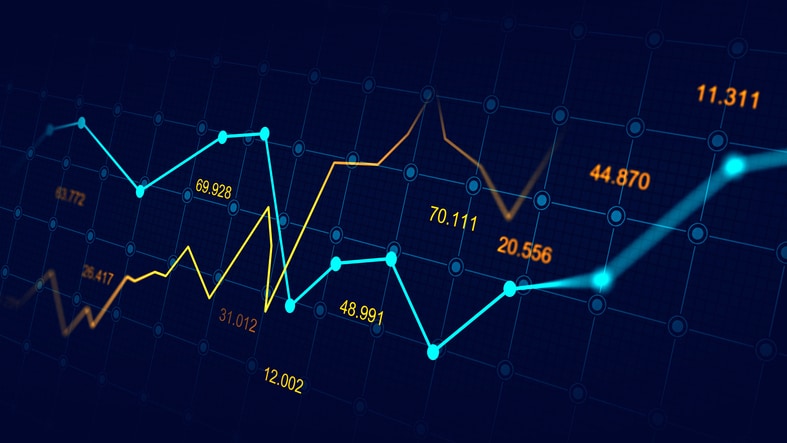Risk management is vital to Forex trading successful. These are the top 10 guidelines for managing risk and safeguarding your capital.
Make Stop Loss orders in every Trade
1. Stop-loss order automatically closes a trade once the market has reached the price that you set, which limits possible losses. Stop-loss orders ensure that you don't lose more than you have budgeted for in the event that you are trading against yourself. When you first open your trade, place the limit order.
2. Define Risk per Trade
Limit your trades to not more that 1-2 percent of the balance in your account. This allows you to stay in the market even during losing streaks, and prevents major loss of your account due to a single trade.
3. Use Proper Position Sizing
In a trade, position size is the amount of currency you buy or sell. You can adjust the size of your trade according to the size of your account as well as the risk associated with the trade and your stop-loss distance. To ensure a steady risk level, you must reduce the size of your position when, for example there is an increase in your stop-loss.
4. Avoid Over-Leveraging
High leverage magnifies the amount of gains and losses. Although brokers may offer high-leverage options, beginners should stick to low leverage. High leverage can quickly erode your account if you make trades against you. It's best to start with low leverage (1:10 or less) until you've gained experience.
5. Diversify Your Trades
Avoid putting the entire amount of capital you own into one currency or trade. Diversifying by trading multiple timeframes or pairs may aid in reducing the risk of loss from unanticipated market fluctuations. Avoid excessive diversification as it may dilute focus and spread out your trading too thin.
6. Make a plan for trading that has risk limits
It is possible to maintain discipline by establishing a trading plan that has rules that are clear about entry, exit and your risk tolerance. Set daily or weekly limit on risk, for example not taking on more than 5percent of your account every day. If you've reached your limit, it is recommended to look at the situation instead of trading because of anger.
7. Use Trailing Stops for Locking in the profits
A trailing stop can adjust its stop-loss as your trade progresses in your favor. This allows you to profit if the market turns around, while also giving your trade the chance to grow in the direction of growth. This is a good way to make money while not closing out the trade.
8. Control Emotions and Avoid Revenge Trade
The emotional impact of trades can cause you to make poor decisions and risk too much. Anger, fear, and the desire to please can lead traders to trade in a hurry or take on more risk than you anticipated. If you lose a trade Do not "revenge" your trade, or try to recoup the losses at one time. Make sure you are aware of your strategy and set risk limits. This will allow you to prevent further losses.
9. Avoid Trading During High-Impact News Events
The market can become extremely volatile when high-impact news is released, like central bank decisions or economic reports. If you have no experience trading news, it's best to stay clear of trading or closing positions prior to and following major announcements. The price spikes may cause unexpected losses.
10. Keep a Trading Journal in order to look back at your mistakes
Keeping a journal helps you to learn from both winning and losing trades. Note down the details for every trade. The details should include the reason why you traded, the level of risk, how the stop-loss was determined and also the outcome. You can enhance your risk control by periodically reviewing your trading journal.
Forex risk management for trading is just as crucial as identifying profitable opportunities. You can ensure your capital by following these suggestions. Also, you'll be able control the losses and develop an effective trading strategy that is sustainable. Have a look at the top https://th.roboforex.com/ for more recommendations including forex trading forex trading, fbs broker review, currency trading platforms, united states forex brokers, forex and trading, best rated forex brokers, best forex trading platform, currency trading demo account, forex trading demo account, forex trading and more.

If You Are Thinking About Trading Forex Online Here Are 10 Suggestions For How You Can Increase The Value Of Your Account.
Leverage can be a powerful tool for Forex trading, amplifying both potential profits and potential losses. Here are 10 strategies to help you comprehend how to leverage your investments effectively.
1. Leverage: The Basics and Concepts
Leverage allows for a greater control over your position than you have in actual capital. For 1:100 leverage, that means with $1, you are in control of $100 on a market. This means that any change in the market could affect your balance by this same fact. This could result in an increase in both gains as well as losses.
2. Be aware of the risks associated with high Leverage
The greater the leverage, the greater the gains and losses. If you leverage 1:500 an 0.2 percent downward price swing could wipe out your entire investment. Many beginner traders are tempted by leverage that is high but be aware that it is a risky strategy and could lead to significant losses in the event that the market is against you.
3. Begin with low leverage
Start out with a lower leverage, like 1:10, or even 1:20 for those who are new to Forex. This allows you to manage your losses and gain confidence, while also reducing the chance of losing a substantial amount of your capital.
4. Calculate the Margin Required
Margin requirements are mandatory for every leveraged trade. This is the amount that you must maintain in your account before opening the position. In this case, a $10,000 transaction requires only $100 of margin when leveraged 1:100. You must understand these requirements if you want to avoid being liquidated or having your account canceled.
5. Leverage is a good tool to use in conjunction with your trading strategies.
The precise stop loss settings in high-frequency, short term trading could permit moderate leverage. In contrast, long-term trades may benefit from a lower leverage because they will be protected by larger price swings. Make sure you use leverage that is suitable for the particular trade and its objectives.
6. Set Strict Loss Stop Orders to Every Trade
Stop-loss limits your loss should you be in a leveraged scenario. It protects your capital if the market shifts to the downside. As leverage magnifies losses set your stop-loss to the level that is line with your tolerance for risk. This can prevent losses from spiraling.
7. Monitor Your Leverage Ratio Regularly
Check your positions regularly to ensure you're not over-leveraged. Reducing or closing certain trades can help maintain a manageable leverage ratio.
8. Utilize a margin calculator, or leverage tool
Many brokers provide tools and calculators that allow you to estimate the leverage used in a transaction, as and how much margin is needed. These tools help you be aware of your risk and limit excessive leverage.
9. Be aware of the regional restrictions on leverage
Different regulations establish the maximum leverage in different regions. In the U.S. retail traders are restricted to 1:50 leverage ratio, whereas in the EU leverage is restricted to 1:30. To ensure compliance and limit risk, opt for an appropriate leverage rate within permissible limit.
10. Review your leverage in light of the current market conditions
Market conditions can quickly change and impact the risk profile of leveraged trades. Think about reducing or altering the leverage or exposure during volatile market conditions or news releases that have a high impact. Lowering leverage in periods of uncertainty can shield your portfolio from sudden, massive price fluctuations.
Conclusion: When evaluating leverage, it's important to be aware of both the benefits and dangers. By using leverage responsibly and setting stop-loss protection orders, and selecting the appropriate ratio of leverage, you will reap the benefits while minimizing its dangers. Take a look at the top rated for blog examples including forex trading brokers list, best forex broker trading platform, best forex broker in usa, best currency trading app, fx forex trading, recommended brokers forex, forex brokers list, forex and trading, best forex trading broker, trading foreign exchange and more.

Top 10 Trading Platform And Technology Tips When You Are Thinking About Online Forex Trading
1. In order to trade Forex successfully, it is crucial to choose the correct platform and be aware of the technologies involved. These are the top ten suggestions for using technology to enhance trading and navigate platforms for trading.
Select a platform that's user-friendly
Opt for a platform you can easily navigate. It should be easy to access charts, manage your position and place orders, without any confusion. Platforms like MetaTrader 4 (MT4), MetaTrader 5 (MT5) and TradingView are well-known due to their user-friendly interfaces and versatility.
2. To Ensure Strong Internet Connection
Forex trading relies on reliable and fast Internet access. Slow or unstable connectivity can result in missed opportunities, slippage, and delay in order execution. If you experience frequent problems with connectivity, think about upgrading your internet connection or making use of a Virtual Private Server (VPS) to ensure a reliable connection.
3. Test Order Execution speed
It is crucial to have a fast order execution, especially when you are day trading or doing scalping. A platform with quick execution times can reduce slippage. This will ensure that you're in a position to trade and withdraw trades at the prices you've established. Check out the speed of the platform using a demo account before you decide to sign up for a real one.
4. Explore Charting & Analysis Tools
A robust platform includes advanced charts and indicators along with technical analysis tools. Look for platforms which allow users to personalize charts, provide access to various indicators, or provide detailed technical analyses. It helps you make informed trading choices.
5. Make sure to look for features on mobile trading.
Mobile trading applications allow users to monitor and manage trades while on the move. Be sure that the app you choose to use offers an app that is reliable and has the essential features you need including trading execution, charting, and monitoring of your account, without compromising user-friendliness.
6. Automated Trading is an excellent option
Many traders employ automated trading strategies and algorithmic trading to improve the consistency of their trading, decrease manual work and improve efficiency. If you are interested in automating your trading, you should choose the trading platform that can support EAs (expert advisors) or bots. MT4 or MT5 can be utilized with a variety of automated tools for trading.
7. Verify the security features
Security is essential in online trading. Pick a platform that utilizes encryption protocols as well as two-factor authentication (copyright) to secure your data. Be wary of platforms lacking adequate security options. They may expose your information and funds to cyber-attacks.
8. You can find real-time updates and news feeds
In order to make the right trading decisions, it is important to get real-time updates regarding economic and price news. A good platform provides up-to-date market information and news feeds from trusted sources. This will keep you up-to-date on developments that may affect your trading.
9. Verify compatibility with your trading style
Different platforms suit different trading styles. Platforms which offer fast execution, one-click transactions, and other features suitable for traders trying to scalp are best. Swing traders will prefer platforms that provide more analysis, charting, and trading tools. Make sure that the platform meets the needs of your particular strategy for trading.
10. Test Customer Support and Platform reliability
It is important to establish a trustworthy support team, particularly when you encounter issues with your system or require technical assistance. If you ask questions, you can test their knowledge and response. Also, review the history of the platform's reliability and uptime as frequent crashes or downtimes can affect your trading performance.
If you select a trading platform that is compatible with your requirements, and being aware of the technical details will allow you to enhance your trading performance and better prepare yourself to navigate the market. Prioritize usability as well as security and the right tools to help your trading. Follow the top rated https://th.roboforex.com/forex-trading/platforms/metatrader5-mt5/ for more recommendations including top forex brokers, top forex brokers, best currency trading app, forex trading, forex trading app, forex and trading, forex trading forex, forex trading forex trading, best forex brokers, fx online trading and more.
